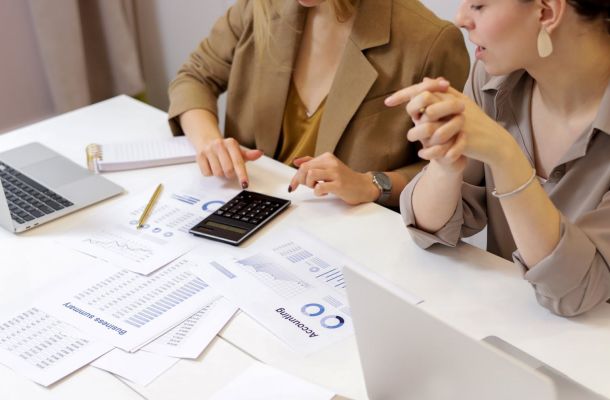How to Read a Balance Sheet for a Small Business

First Financial Bank
Reading the balance sheet isn’t everything, but it will provide a snapshot of the business’ financial health.
You are about to take the exciting but nerve-wracking step of buying a small business. There are several advantages to purchasing an existing business, such as the availability of the sales history, the potential for growth, and the existing infrastructure and customer base. Your passion, skills, and expertise drive your determination to pursue a path to owning your own business.
But you can’t let your heart guide your decisions because buyer’s remorse is the last thing you need or want. Doing your due diligence is an absolute must before jumping in to buy a retail business. Let’s look at a balance sheet and how it reflects the financial health of a business.
What is a Balance Sheet?
A balance sheet provides information on what resources are available to a company and how they were financed. The bottom line is that the balance sheet will help determine whether the business is a wise investment:
- The balance sheet is a summary of the business at a specific point in time.
- The balance sheet gives information on assets, equity, and liabilities. The basic formula is Assets=Liabilities + Equity.
- A company’s balance sheet is a snapshot of assets and liabilities at a single point in time.
- Many experts believe that the most critical areas on a balance sheet are cash, accounts receivable, short-term investments, property, plant, equipment (PPE), and other significant liabilities.
- A balance sheet should always balance, meaning that assets should equal liabilities plus owners’ equity. Owners’ equity should equal assets minus liabilities.
How to Read a Balance Sheet
It is time to break down what is included in a balance sheet and what each section means. The balance sheet provides significant insight into a business’s fiscal health. A balance sheet has three sections: assets, liabilities , and equity:
1. Assets
Assets are anything owned by the company that could be converted into cash, called liquidation. Assets are usually positives on the balance sheet (though there are such things as “contra assets”) and are divided into current and noncurrent assets.
- Current assets can be converted into cash within a year, such as cash, marketable securities, inventory, and accounts receivables.
- Noncurrent assets, such as land or other real estate, patents, equipment, and trademarks, are not expected to be converted within the year.
2. Liabilities
Liabilities are what a company owes, are obligated to pay, and are an inverse of the assets. These are tallied against the balance sheet. Liabilities are also current or noncurrent.
Current Liabilities:
-
- Current liabilities include wages payable, debt financing, rent, utility payments, accounts payable, and other costs.
Noncurrent Liabilities
-
- Examples of noncurrent liabilities which are not due within a year could be obligations for future goods or services, leases, loans, deferred tax liabilities, and bonds payable.
3. Owner’s Equity
The owner’s equity is what is left over when you subtract liabilities from assets. In summary, owner’s equity is anything belonging to the business owners after any liabilities are accounted for.
As important as the balance sheet is in evaluating a small business, you should consider other financial statements/documents in tandem with the balance sheet. As a whole, a balance sheets and financial statements provide the most extensive view of a business’s current viability.
Profit and Loss Statements
Profit and loss statements are an overview of how a business is doing over a period of time. A profit and loss statement is also referred to as an income statement. This statement shows the net earnings or losses, in other words, how profitable the business is.
Cash Flow Statements
Cash flow statements look at the money going in and out of business and can tell if the business is generating enough cash to pay expenses. The basic components of the cash flow statement are any short or long-term investments, financing (loans ), and operating costs (the discrepancy between whether the gap between expenses and income is growing).
Assessing a Small Business Using the Balance Sheet
Now you can see how vital the balance sheet is when considering the purchase of a small business. But don’t forget other factors as you assess a business’s viability.
Consider the history of the business, including longevity, location, and employees. What about the customer base and the prospect of attracting new customers? What is the outlook for this type of business and its current reputation in the community?
Use all the resources at hand, including the balance sheet, to make an informed and practical decision you can be confident in.




